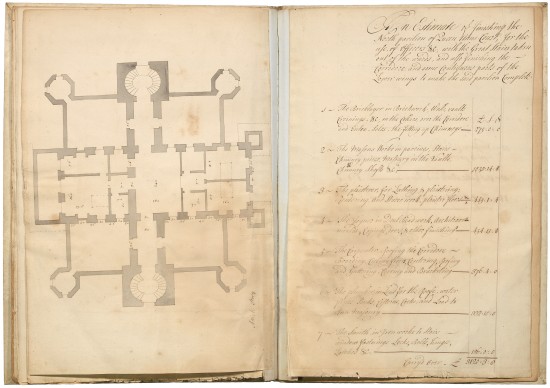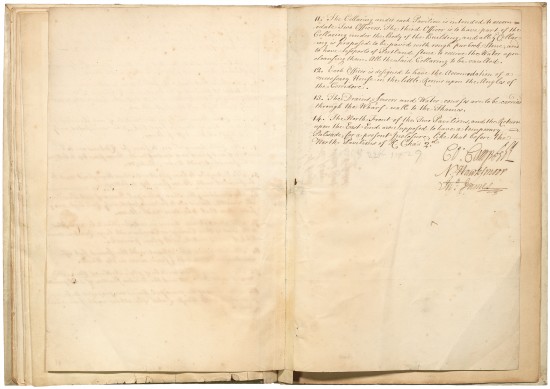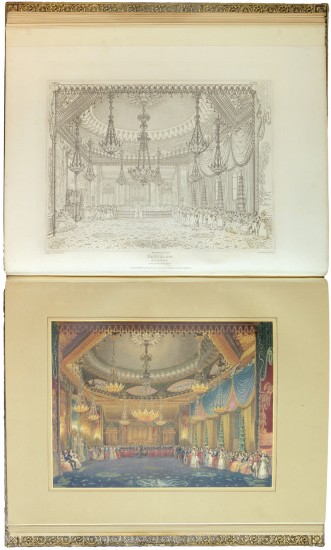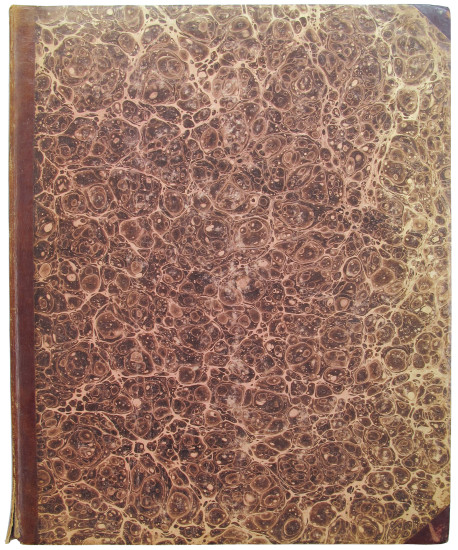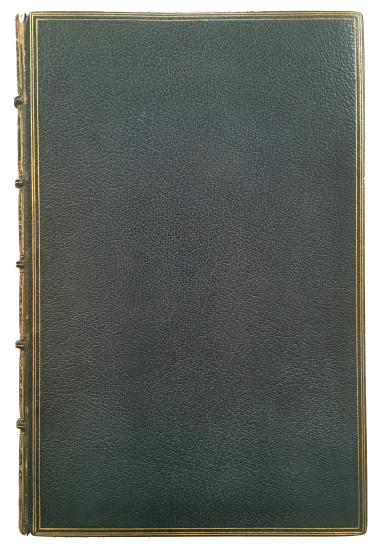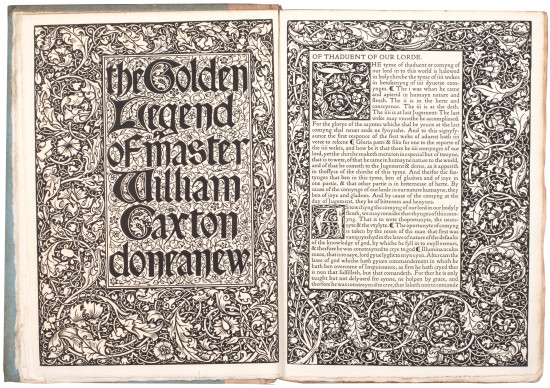The Plan and Estimate of Finishing Queen Anns North Pavilion Anno Dom. 1728 - 9
Hawksmoor, Nicholas, Colen Campbell & John James
(London). 1728 / 1729
An exceptional discrete collection - and a remarkable survival from the early eighteenth-century -of groundplans, elevations and documents, the proposal by Hawksmoor, Campbell and James for Queen Anne's North Pavilion at Greenwich.
The proposal incorporates groundplans and elevations and two documents, the description of the proposed works and their costs, each signed by Nicholas Hawksmoor as Assistant Surveyor and Clerk of Works (a position he had held since 1698), Colen Campbell as Surveyor and John James as Assistant Clerk of Works.
In December 1727, following the accession of George II, a new commission met - the ticket for one of the meetings of the commission is present here - for the purpose of 'carrying on and completing the Royal Hospital at Greenwich', the venture originally commissioned by Queen Mary in 1691 and on which Nicholas Hawksmoor first worked as an assistant to Christopher Wren. In 1698, Hawksmoor was appointed Clerk of the Works at Greenwich; at the time the present document was drawn up he was still in post, assisted by John James and with Colen Campbell as his Surveyor from 1726 - 1729.
Hawksmoor published his 'Remarks on the Founding and Carrying On the Building of the Royal Hospital at Greenwich' in 1728 and these proposals date from the same period, a time when a new commission had been proposed for finishing the hospital. In that work - and the parallels are evident - Hawksmoor expressed his 'desire for the works to be continued on the monumental scale that he has proposed in the past' (see RIBA 1479). It seems appropriate to consider the present drawings and documents in that light.
'Hawksmoor was one of the most thoroughgoing architects ever to work in England. He thought his way through the architecture of the ancient world and through the modern architecture of his day. He full understood their nature and when he breaks hte rules he does so deliberately to make the essence of architecture more apparent to the spectator. He recognised the architecture of ancient Rome as an essential point of departure, but he was convinced that departure was essential ... His buildings make a direct assault on the emotions and yet always present a truly intellectual statement. He ... bears the major responsibility for the English High Baroque ... '. (J. H. V. Davies writing in the introduction to the Arts Council's 1962 exhibition catalogue 'Hawksmoor').
A full description is available on request.
[see Downes, Hawksmoor, 1959: identified in 'drawings for particular executed buildings' as '372 (Patrick McNeil Esq.) volume of drawings and estimates for finishing Queen Anne Block'].
The proposal incorporates groundplans and elevations and two documents, the description of the proposed works and their costs, each signed by Nicholas Hawksmoor as Assistant Surveyor and Clerk of Works (a position he had held since 1698), Colen Campbell as Surveyor and John James as Assistant Clerk of Works.
In December 1727, following the accession of George II, a new commission met - the ticket for one of the meetings of the commission is present here - for the purpose of 'carrying on and completing the Royal Hospital at Greenwich', the venture originally commissioned by Queen Mary in 1691 and on which Nicholas Hawksmoor first worked as an assistant to Christopher Wren. In 1698, Hawksmoor was appointed Clerk of the Works at Greenwich; at the time the present document was drawn up he was still in post, assisted by John James and with Colen Campbell as his Surveyor from 1726 - 1729.
Hawksmoor published his 'Remarks on the Founding and Carrying On the Building of the Royal Hospital at Greenwich' in 1728 and these proposals date from the same period, a time when a new commission had been proposed for finishing the hospital. In that work - and the parallels are evident - Hawksmoor expressed his 'desire for the works to be continued on the monumental scale that he has proposed in the past' (see RIBA 1479). It seems appropriate to consider the present drawings and documents in that light.
'Hawksmoor was one of the most thoroughgoing architects ever to work in England. He thought his way through the architecture of the ancient world and through the modern architecture of his day. He full understood their nature and when he breaks hte rules he does so deliberately to make the essence of architecture more apparent to the spectator. He recognised the architecture of ancient Rome as an essential point of departure, but he was convinced that departure was essential ... His buildings make a direct assault on the emotions and yet always present a truly intellectual statement. He ... bears the major responsibility for the English High Baroque ... '. (J. H. V. Davies writing in the introduction to the Arts Council's 1962 exhibition catalogue 'Hawksmoor').
A full description is available on request.
[see Downes, Hawksmoor, 1959: identified in 'drawings for particular executed buildings' as '372 (Patrick McNeil Esq.) volume of drawings and estimates for finishing Queen Anne Block'].
[12 leaves: 7 single sheets, 5 bifolia]. Folio. (390 x 275]. 10 architectural plans or sections, 1 double-page, one large folding and 8 single page (one pasted in), each executed in graphite, sepia and wash. Text in sepia ink throughout, all bifolia / single sheets of laid paper with watermarks / countermarks of a single Fleur-de-Lys, a Fleur-de-Lys within cartouche with coronet and the letter LVG, IV or VI, IHS with a cross, LVILLEDARY etc.; sheets mounted on tabs throughout. Later full vellum with title gilt to front board 'QUEEN ANNE'S BUILDING / GREENWICH HOSPITAL / 1729'.
#44562












